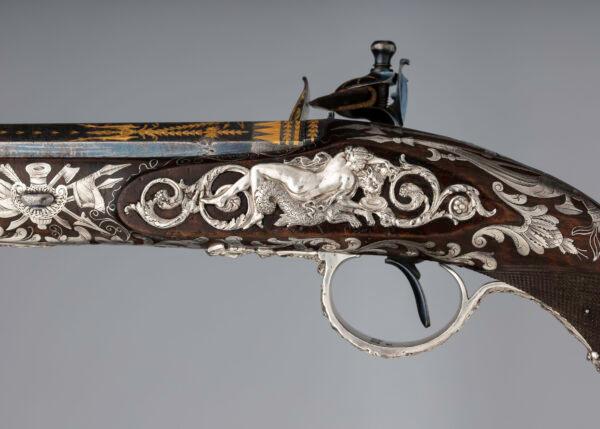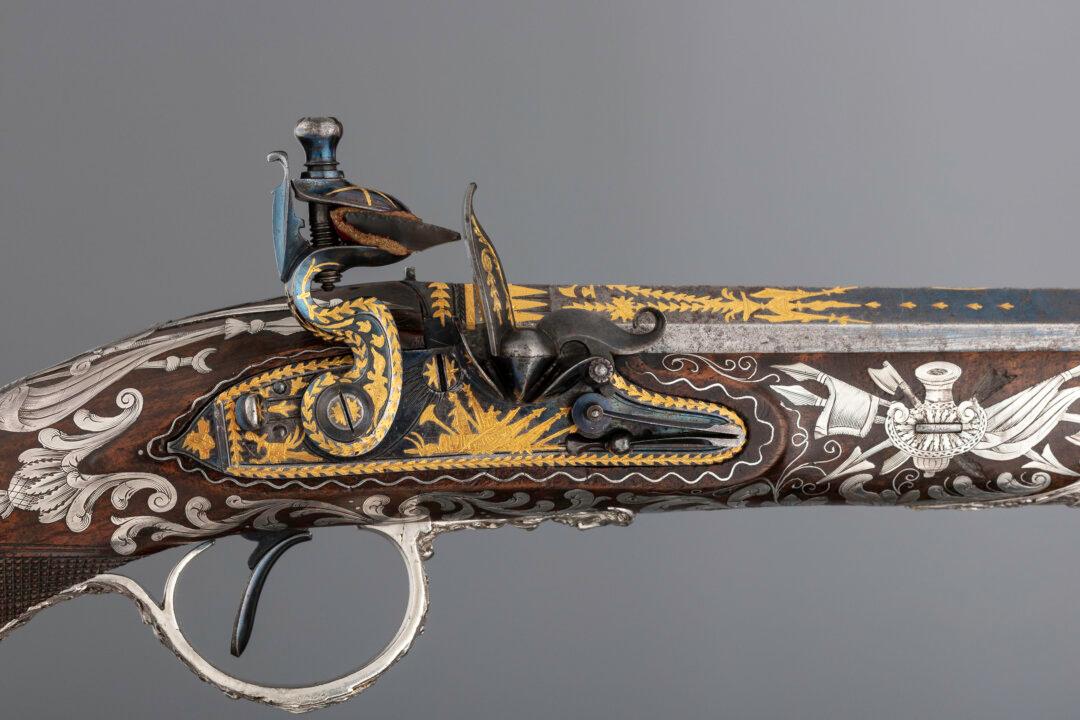Cast in silver, Medusa screams out on the pistol butt of a beautiful, 19th-century, walnut and rosewood flintlock pistol. Hercules’s victory over an Amazon makes an appearance on an oval medallion on the trigger guard, and a sea nymph feeding a sea leopard is featured on the engraved sheet-silver inlay that runs along the stock.

Many of the ornamental motifs on this flintlock pistol are taken from ancient Rome. Here, a nereid (sea nymph) feeds a sea leopard; 1800–1801, by gunmaker Samuel Brunn and silversmith Michael Barnett. British, London. Purchased through the Harris Brisbane Dick Fund and gift of George D. Pratt, by exchange, 1992. The Metropolitan Museum of Art






